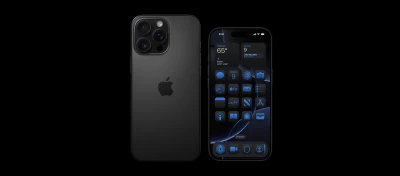Imagine you're in a noisy place, like a busy street or a crowded bus, and you want to listen to your favorite song on your headphones. But the noise around you is so loud that you can't enjoy the music. This is where noise cancellation comes in! By enabling the feature you can listen to only what you want to and rest of the noise would be reduced or deducted by a certain amount that will not going to occur any disturbance to your listening experience.
What is Noise Cancellation?
Noise cancellation is like a superhero power for your headphones. It is a wonderful technology that helps us block out unwanted sounds. Imagine you’re trying to listen to your favorite song, but there’s a lot of noise around you. Noise cancellation is like a superhero that comes to your rescue!
There are two types of noise cancellation:Active and Passive. Active Noise Cancellation (ANC) is like a smart robot in your headphones. This robot listens to the noise around you and creates an opposite sound wave to cancel out that noise. It’s like when you see a wave coming at you on the beach, and you make your own wave to stop it. But remember, this smart robot needs power to work, so headphones with ANC need to have a battery as a power source.
On the other hand, Passive Noise Cancellation is like having big, fluffy earmuffs. It doesn’t need a battery or a smart robot. It simply uses the materials of the headphones, like foam pads or earmuffs, to block out the noise. It’s like when you cover your ears with your hands to block out a loud noise. That’s how Passive Noise Cancellation works!
Active Noise Cancellation (ANC)
Active Noise Cancellation is like having a smart robot in your headphones. This robot listens to the noise around you with tiny microphones in your headphones7. When it hears a noise, like a car honking or people talking, it creates an opposite sound wave to cancel out that noise8. It's like when you see a wave coming at you on the beach, and you make your own wave to stop it. That's how ANC works!

But remember, this smart robot needs power to work. So, headphones with ANC need to have a battery10. Also, it needs an amplifier and sound/digital signal processing chip built-in other wise it won't be able to generate the reflection of the obtained noise signal. So, few ANC enabled earphones are such as
- Bose QuietComfort Earbuds
- Sony WF-1000XM5
- Apple AirPods Pro 2
- Sennheiser Momentum TW 4
- Jabra Elite 10
Passive Noise Cancellation
Passive Noise Cancellation is like having big, fluffy earmuffs. It doesn't need a battery or a smart robot. It simply uses the materials of the headphones, like foam pads or earmuffs, to block out the noise10. It's like when you cover your ear canels with your hands to block out a loud noise. Passive noise cancellation is a method that blocks external sounds physically. It doesn’t require any power or electronics. The design of the headphones or earbuds, the materials used, and the fit in or over the user’s ear canels contribute to this. It’s often seen in over-ear headphones with thick padding or in-ear earbuds that seal the ear canal. While it’s effective at reducing consistent, low-frequency sounds like the hum of a plane or train, it’s less effective for sudden, high-frequency sounds.That's how Passive Noise Cancellation works! Here are some good quality passive noise cancellation enabled earphones:
- Sennheiser IE 300
- SONY IER-Z1R
- Shure SE215
- Audio-Technica ATH-E40
- FiiO FH5
The Difference
The main difference between Active and Passive Noise Cancellation is how they block the noise. Active Noise Cancellation uses a smart robot (the technology) to actively cancel out the noise. On the other hand, Passive Noise Cancellation uses the physical materials of the headphones to block out the noise10.
Which One is Better?
Well, it depends on what you need. Active Noise Cancellation (ANC) uses microphones and electronics to generate an “anti-noise” signal that cancels out ambient noise. However, this process can slightly degrade audio quality as the speaker produces the anti-noise and audio signals simultaneously, potentially causing distortion or loss of detail. On the other hand, Passive Noise Cancellation relies on physical barriers like earcup design and materials to block noise. It doesn’t affect audio quality as there’s no signal interference, but its effectiveness is limited to certain types of noise. Therefore, for the most precise audio quality, headphones with good passive noise cancellation might be a better choice.
But if you're in a very noisy place and you don't mind charging your headphones, Active Noise Cancellation might be better for you11. But if you're in a quieter place or you don't want to worry about charging your headphones, Passive Noise Cancellation might be enough11.
So, the next time you put on your headphones, remember the superhero power of noise cancellation. Whether it's the smart robot of Active Noise Cancellation or the big, fluffy earmuffs of Passive Noise Cancellation, they're both here to help you enjoy your music better!
Source(s)
1. What Is Active Noise Cancellation (ANC)? - How-To Geek
2. Active noise control - Wikipedia
3. What’s the Difference Between Passive and Active Noise ...
4. Active vs. Passive Noise Cancellation: Which Is Better ...
5. Active Noise Cancellation Circuit Diagram
6. Active Vs Passive NoiseCanceling Headphones Differences Explained
7. Noise Reduction Rating Chart
8. Audio Noise Cancellation Circuit Diagram
10. 降噪耳机的降噪原理介绍 - 知乎
11. Active noise canceling (ANC) technology types explained
12. What Is Active Noise Cancellation And Passive Noise ...
13. What’s The Difference Between Passive And Active Noise ...
14. Passive vs Active vs Adaptive Noise Cancellation • Audiostance

















